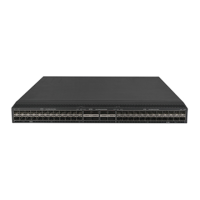15
[Device] display mac-address blackhole
MAC Address VLAN ID State Port/Nickname Aging
000f-e235-abcd 1 Blackhole N/A N
# Display the aging time of dynamic MAC address entries.
[Device] display mac-address aging-time
MAC address aging time: 500s.

